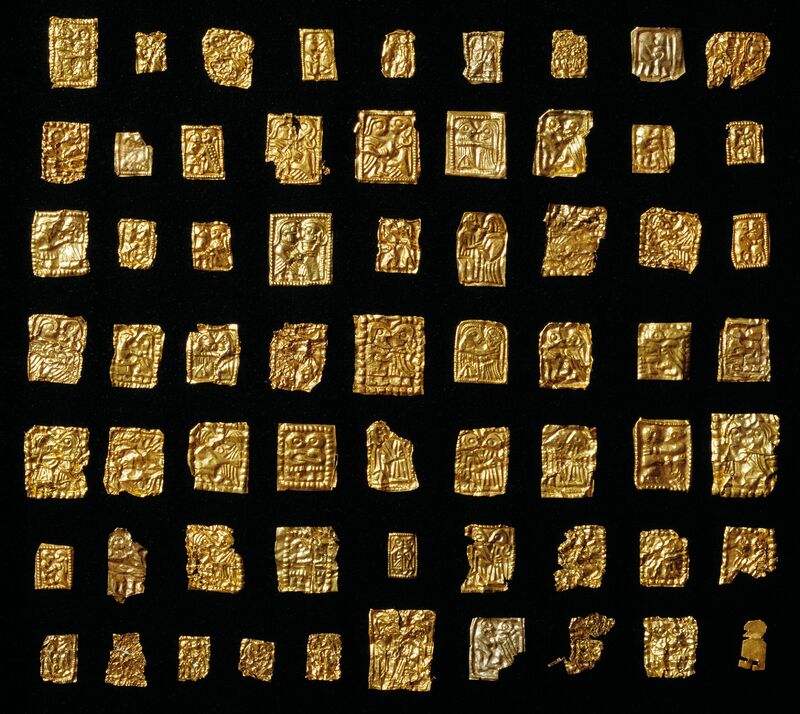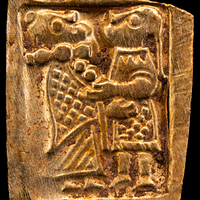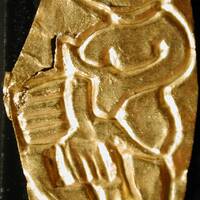Gold-foil figures from Scandinavia
Date:
Seventh–eighth century
Medium:
Gold
Dimensions:
0.5–2 cm; max. 1 mm thick
Description:
These tiny objects were mass produced in Sweden, Denmark, and Norway in the seventh–eighth centuries after bracteates had fallen out of fashion, perhaps because gold became less available. Figural motifs were stamped with a die into very thin sheets made of gold, then cut out from the larger sheet and sometimes engraved with additional details. Unlike bracteates—which are larger, thicker, round, and meant to be worn—the irregularly shaped foil figures lack loops or perforations and could not have been used as jewelry. Their function is unknown; they may have been attached to vessels or furnishings. Over 3000 extant examples attest to an interest in figural imagery. There are clothed men and women, usually single but sometimes in pairs; nudes of uncertain gender; and a much smaller number of animals and unidentified figures. Some motifs appear on as many as sixty identical gold foils. Even though these objects have been found since the eighteenth century, there is no consensus about their meanings or functions.
The gold-foil figures are often called by their Scandinavian names: Goldgubber in Swedish (plural), Guldgubber in Danish, and Gullgubber in Norwegian, but "gubbe" means man, and many of the foil figures are women. "Guldgubbe" means "old man of gold." The gender-neutral term "gold-foil figures" is used here.
The gold-foil figures are often called by their Scandinavian names: Goldgubber in Swedish (plural), Guldgubber in Danish, and Gullgubber in Norwegian, but "gubbe" means man, and many of the foil figures are women. "Guldgubbe" means "old man of gold." The gender-neutral term "gold-foil figures" is used here.
Relevant Textbook Chapter(s):
4
Repository and Online Resources:
• Read more about guldgubber here.
Image Credits:
Wikimedia Commons; National Museum of Denmark; Blekinge Museum






